- Parents Home
- Para Padres
- A to Z Dictionary
- Allergy Center
- Asthma
- Cancer
- Diabetes
- Diseases & Conditions
- Doctors & Hospitals
- Emotions & Behavior
- First Aid & Safety
- Flu (Influenza)
- Food Allergies
- General Health
- Growth & Development
- Heart Health & Conditions
- Homework Help Center
- Infections
- Newborn Care
- Nutrition & Fitness
- Play & Learn
- Pregnancy Center
- Preventing Premature Birth
- Q&A
- School & Family Life
- Sports Medicine
- Teens Home
- Para Adolescentes
- Asthma
- Be Your Best Self
- Body & Skin Care
- Cancer
- Diabetes
- Diseases & Conditions
- Drugs & Alcohol
- Flu (Influenza)
- Homework Help
- Infections
- Managing Your Weight
- Medical Care 101
- Mental Health
- Nutrition & Fitness
- Q&A
- Safety & First Aid
- School, Jobs, & Friends
- Sexual Health
- Sports Medicine
- Stress & Coping
Seizures
What Is a Seizure?
A seizure (SEE-zhur) is unusual electrical activity in the brain that can cause changes in behavior, movement, or feelings. Normally, electrical activity in the brain involves neurons (nerve cells) in different areas sending signals at different times. During a seizure, many neurons fire all at once.
Not all kids who have had one seizure will have another. Epilepsy is when someone has repeated seizures. Some kids will outgrow seizures.
What Happens in a Seizure?
Normally, electrical activity in the brain involves neurons (nerve cells) in different areas sending signals at different times. During a seizure, many neurons fire all at once.
What Are the Different Types of Seizures?
Some seizures affect both sides of the brain, while others involve only one side.
Generalized seizures affect both sides of the brain. Generalized seizure types include:
- generalized tonic-clonic seizures
- absence seizures
- atonic seizures
- tonic seizures
- myoclonic seizures
Focal seizures affect a single area in one side of the brain. Focal seizures types include:
- focal aware seizures
- focal impaired awareness seizures
- focal to bilateral generalized tonic-clonic seizures
Some people have both focal and generalized seizures.
What Are the Signs & Symptoms of a Seizure?
Signs and symptoms of seizures depend on what kind of seizure someone has. They may stare into space or have jerking movements in part of their body or the whole body. Some people may show no signs at all.
What Happens After a Seizure?
After a seizure, the person may feel confused, tired, have a headache, or have other symptoms. This is called the postictal (post-IK-tul) phase. It usually lasts just a few minutes, but can be longer.
What Causes Seizures?
The most common type of seizure in children is from a fever (called a febrile seizure). Other causes include infections, low blood sodium, medicines, drug use (amphetamines or cocaine), brain injury or a tumor, and genetic changes. Sometimes, a seizure's cause is never found.
How Are Seizures Diagnosed?
If a child has a seizure, doctors will ask questions and do an exam. Sometimes no testing is needed. If it is, tests may include:
- blood tests and urine (pee) tests to look for infections or illnesses
- an EEG to measure brain wave activity
- a VEEG, or video electroencephalography (EEG with video recording)
- a CAT scan, MRI, or PET/MRI to get very detailed images of the brain
Some kids who’ve had a seizure need to see a pediatric neurologist (a doctor who treats brain, spine, and nervous system problems).
How Are Seizures Treated?
How doctors treat seizures depends on their cause (if known) and the type of seizure. Some won’t need any treatment.
Medicines can help with many types of seizures. If medicine doesn’t work, other treatments are available.
How Can Parents Help?
If your child had a seizure, talk to the doctor about:
- any medicines your child should take
- any “triggers” (such as fever, flashing lights, hunger, lack of sleep, or medicines) that can make a seizure more likely
- any precautions your child should take while swimming or bathing
- whether your child should wear a medical ID bracelet
- whether your child needs to see a neurologist
- if it’s OK for your teen to drive
- how to keep your child safe during a seizure. Share this information with caregivers, coaches, and staff at your child’s school.
If your child has another seizure, keep a record of:
- when it happened
- how long it lasted
- what happened right before the seizure
- what happened during and after the seizure
This information will help the doctor find what’s causing the seizures and decide on the best treatment.
What Else Should I Know?
If your child has seizures, reassure them that they’re not alone. Your doctor and the care team can answer questions and offer support. They also might be able to recommend a local support group. Online organizations can help too, such as:
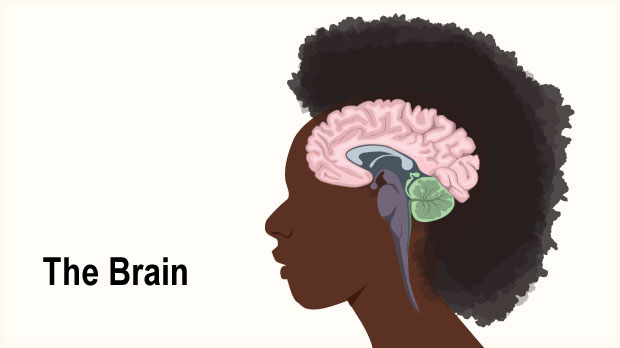
The Anatomy of the Brain
The brain is like a computer that controls the body's functions, and the nervous system is like a network that relays messages to parts of the body.
Click through this slideshow to learn more about the brain and nervous system.
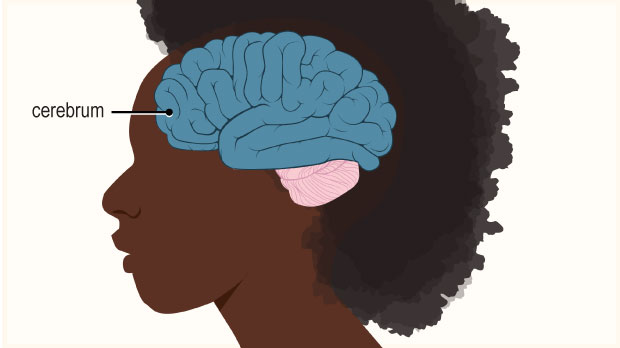
Cerebrum
The largest part of the brain, the cerebrum has two hemispheres (or halves). The cerebrum controls movement, speech, intelligence, emotion, and what we see and hear.
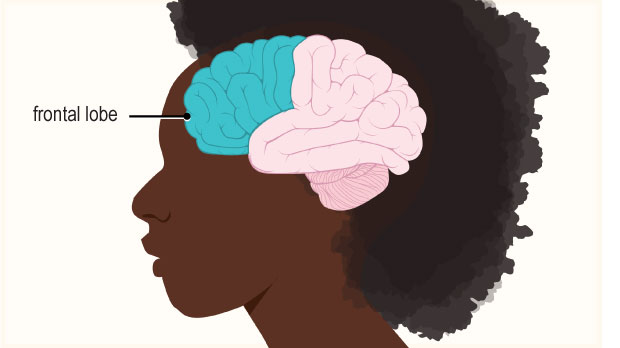
Frontal Lobe
The frontal lobe, located behind the forehead, does much of the work of complex thinking, like planning, imagining, making decisions, and reasoning.
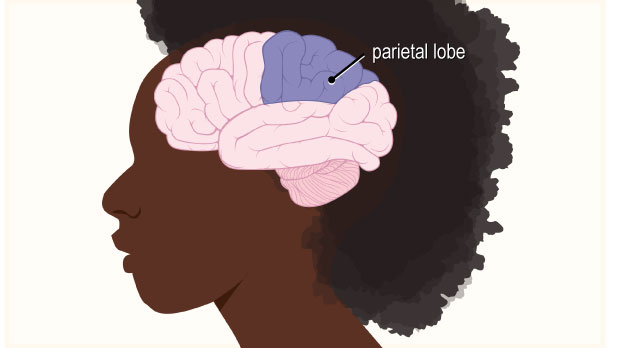
Parietal Lobe
The parietal lobe, located behind the frontal lobe, processes information about touch, taste, and temperature.
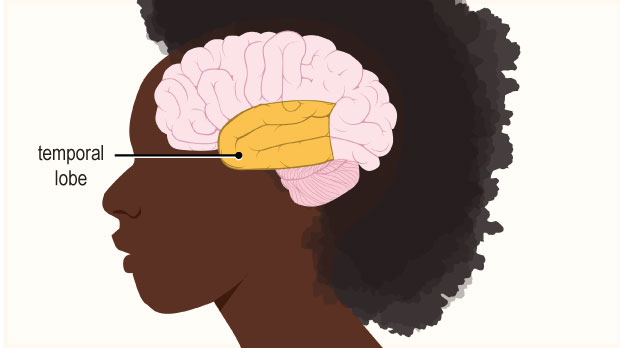
Temporal Lobe
The temporal lobe, found near the ears, lets us understand sounds and language, allows us to recognize objects and faces, and helps us create memories.
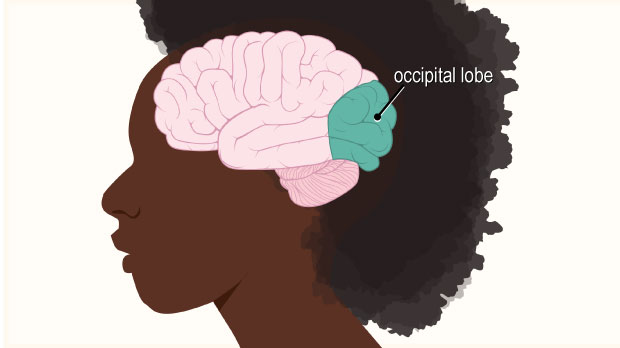
Occipital Lobe
The occipital lobe, in the rear of the brain, processes light and other visual information from the eyes, and allows us to know what we are seeing.
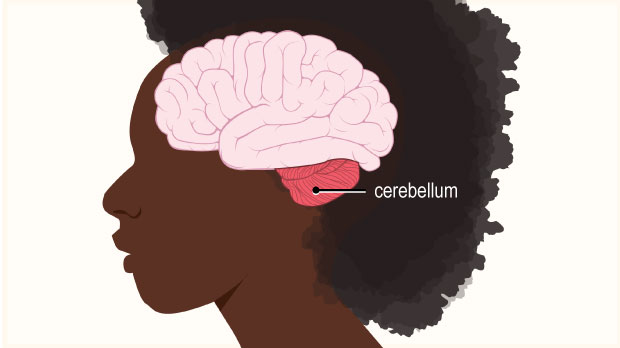
Cerebellum
The cerebellum helps coordinate and fine‑tune movement and balance.
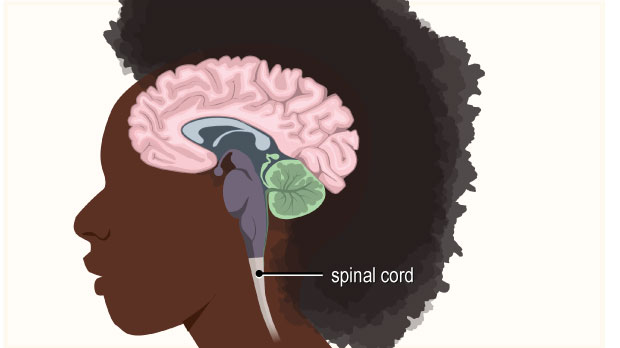
Spinal Cord
This portion of the central nervous system runs down the inside of the spinal column, connecting the brain with nerves going to the rest of the body.
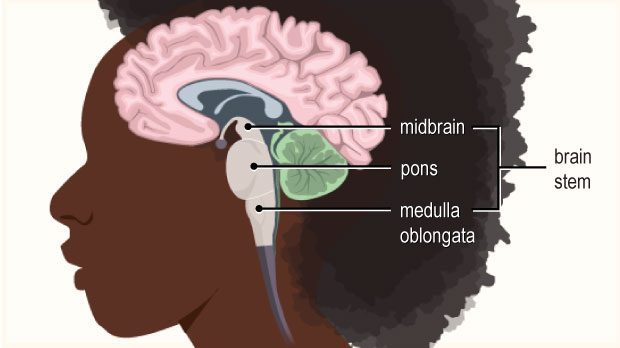
Brain Stem
At the base of the brain, the brain stem connects to the spinal cord and is made up of the midbrain, pons, and medulla oblongata.

Pons
The pons relays messages from the cerebrum to the cerebellum and spinal cord, and helps control movement of the face.
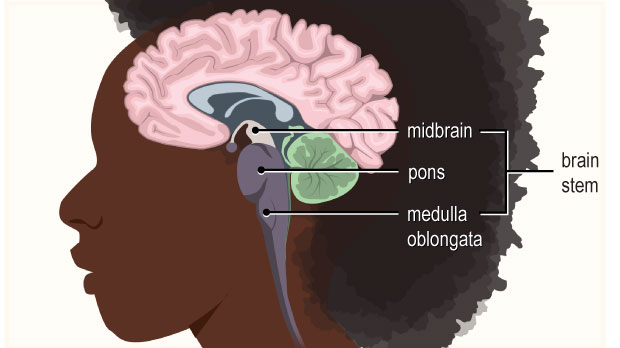
Midbrain
The midbrain helps control eye movements, and allows the brain to communicate with the rest of the nervous system.
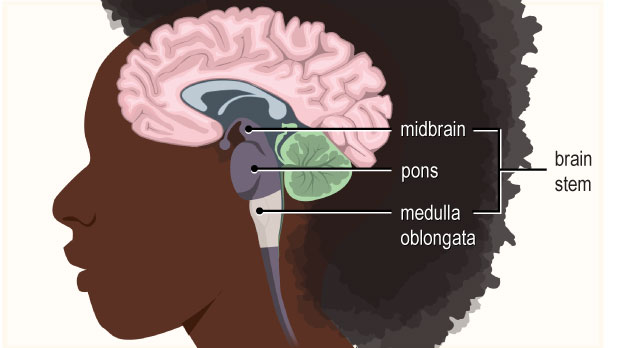
Medulla Oblongata
This portion of the brain stem is located just above the spinal cord. It regulates vital functions, such as heartbeat and breathing.

Thalamus
Located in the central part of the brain, the thalamus receives sensory messages, such as touch, from the body, and sends the messages to the appropriate part of the brain to be interpreted.
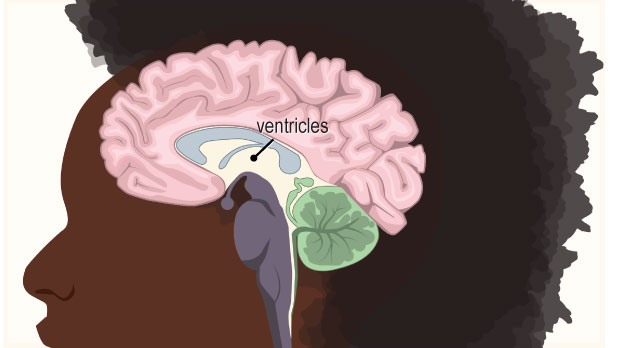
Ventricles
These hollow spaces in the brain have cerebral spinal fluid (CSF) in them. CSF flows through the ventricles and around the spine in the spinal column, protecting and nourishing the central nervous system.
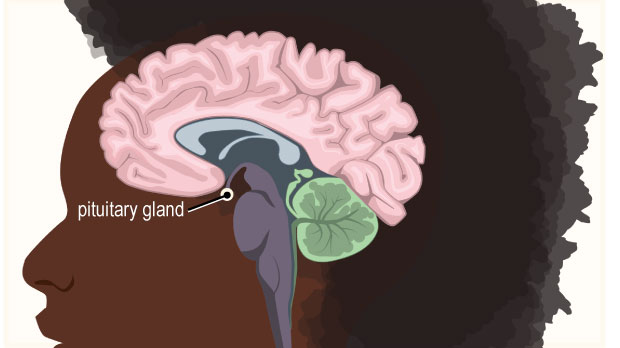
Pituitary Gland
This tiny gland produces hormones involved in regulating growth, puberty, metabolism, water and mineral balance, the body's response to stress, and more.
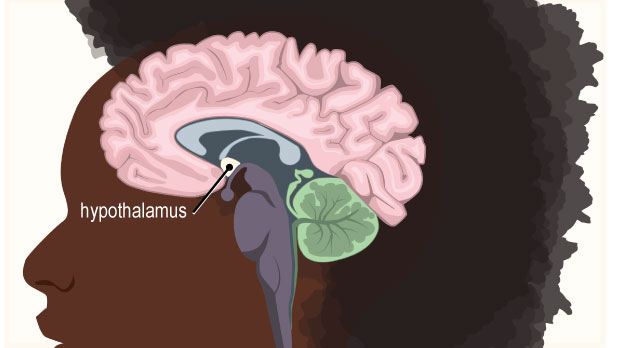
Hypothalamus
The hypothalamus regulates functions like thirst, appetite, and sleep patterns. It also regulates the release of hormones from the pituitary gland.

© 1995- The Nemours Foundation. KidsHealth® is a registered trademark of The Nemours Foundation. All rights reserved.
Images sourced by The Nemours Foundation and Getty Images.
